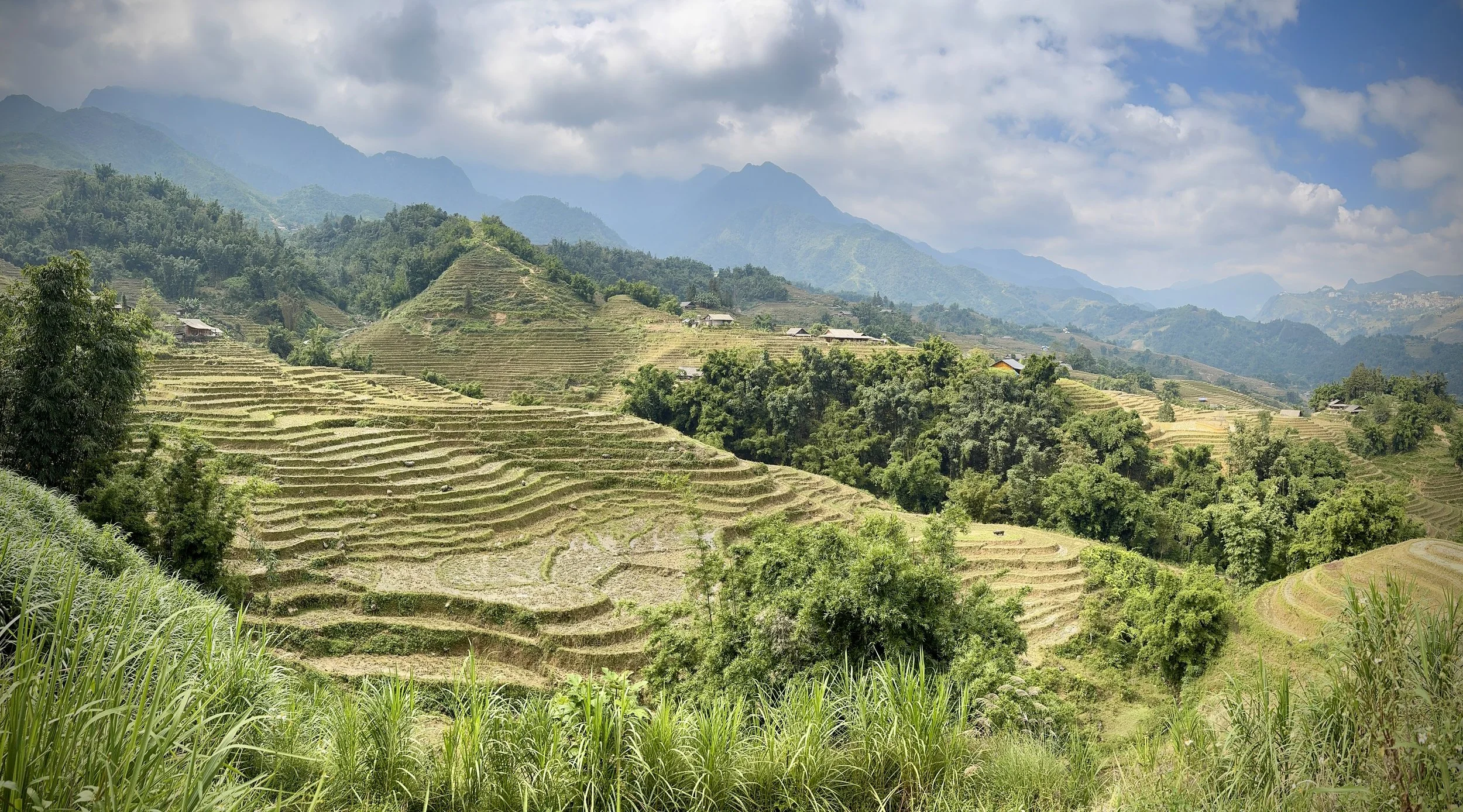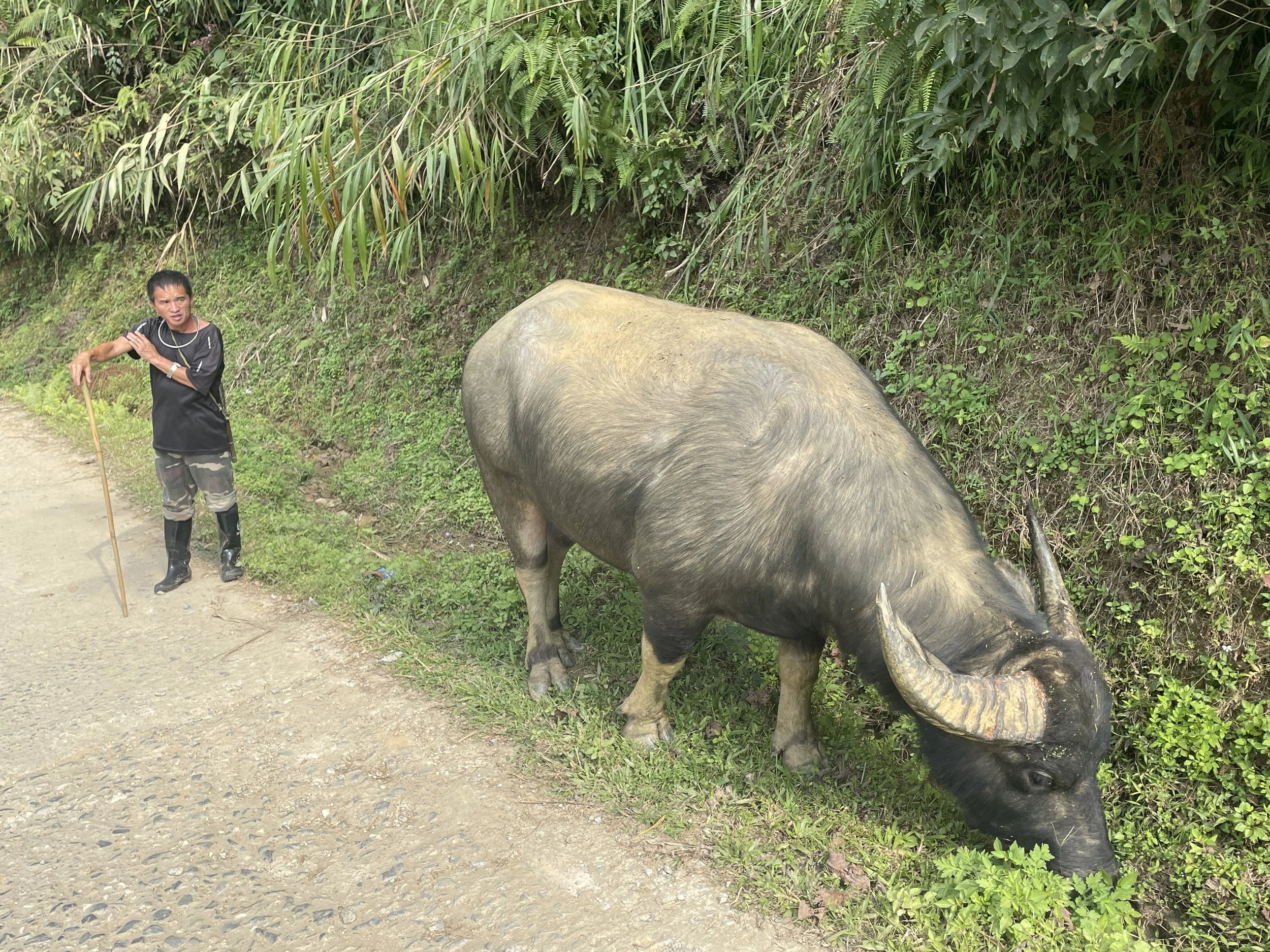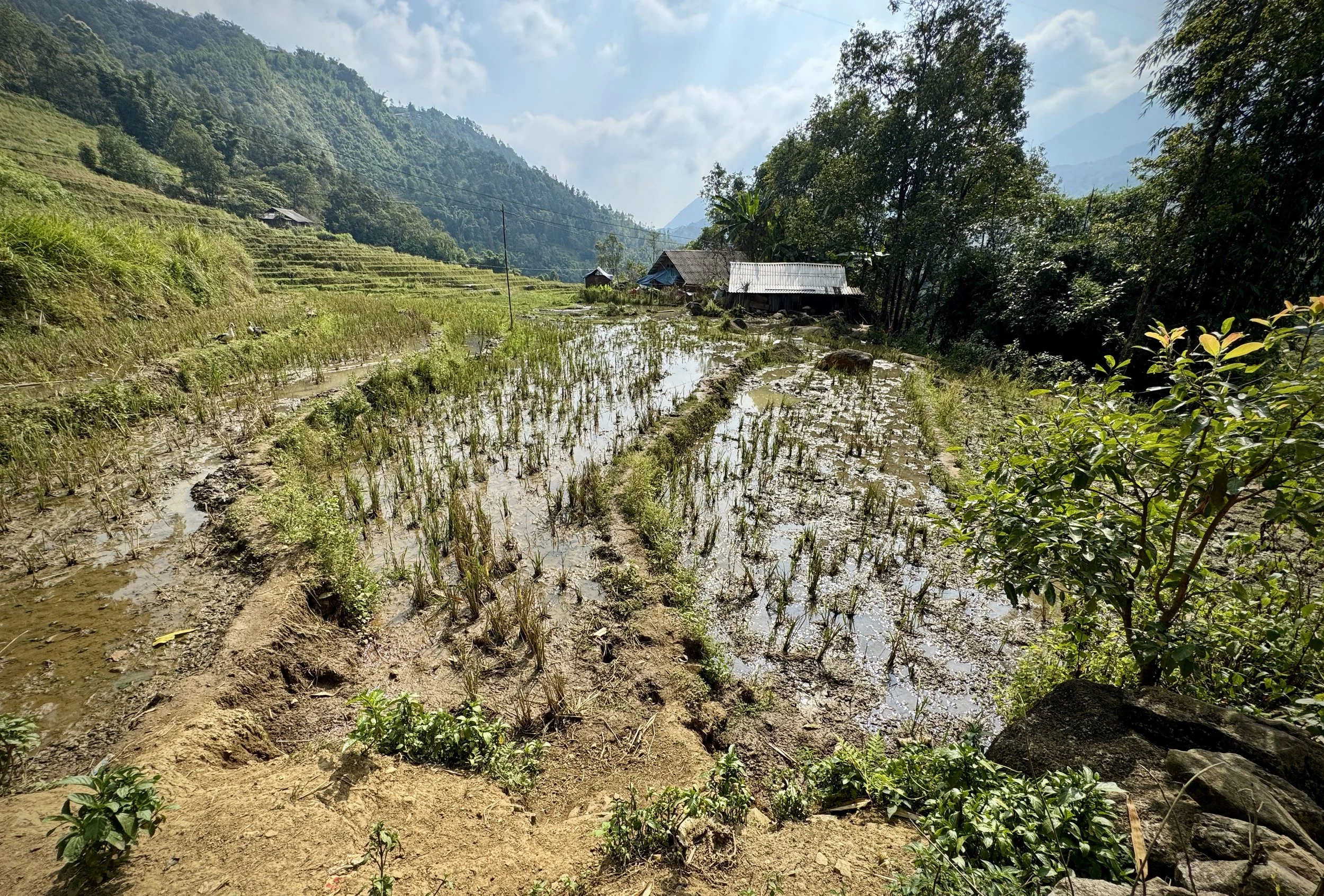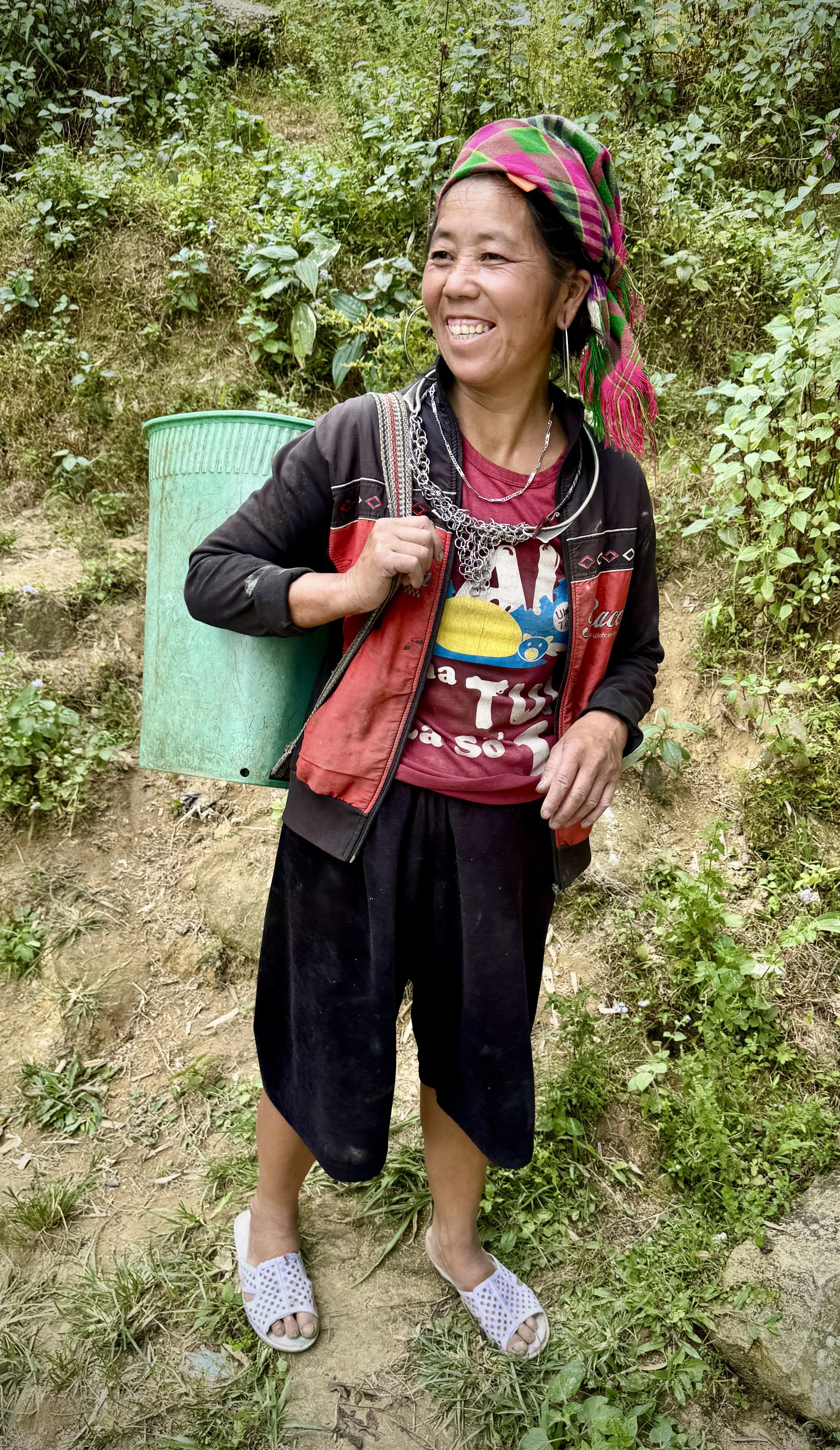Hiking in The Sapa Valley, Vietnam
Start: Junction of TL152 road and path down to the valley at Y Linh Ho village
Finish: Lá Dao Spa - Home - Restaurant, Tả Van, Sa Pa, Lào Cai
Distance: 12.2 km (7.6 miles)
Elevation Change: +283m / - 614m. Net -331m
GPX File: get via Buy Me a Coffee
Cafes on route: Several on route. We stopped at A Sinh Restaurant, Lao Chai (4.3 km in). Several places to eat at the end in Ta Van
Links: Sa Pa, Y Linh Ho village, Lao Chai village
Sapa Valley, nestled in the Hoàng Liên Son Mountain Range of northern Vietnam, is a breathtaking region renowned for its dramatic landscapes. The most iconic feature of the valley is its cascading terraced rice fields, which descend the mountainsides in vibrant hues of green and gold, depending on the season. This stunning agricultural artwork is not only visually captivating but also a testament to the ingenuity of the local ethnic minority communities who have meticulously carved and cultivated these fields for centuries. Beyond the terraces, Sapa boasts towering peaks, including Fansipan – the "Roof of Indochina" – misty valleys, and numerous impressive waterfalls like Silver Waterfall (Thác Bạc) and Love Waterfall (Thác Tình Yêu), all contributing to its allure as a nature lover's paradise.
The cultural richness of Sapa is as compelling as its natural beauty. The valley is home to a diverse array of ethnic minority groups, including the Hmong, Dao, Giáy, Xa Pho, and Tay, each with their own unique traditions, languages, and vibrant traditional costumes. Visitors have the opportunity to immerse themselves in these cultures by visiting local villages like Cat Cat and Ta Van, participating in homestays, or exploring the bustling markets where villagers gather to trade goods and socialize. These interactions offer a genuine glimpse into a way of life that has largely remained unchanged for generations, making Sapa a truly authentic cultural experience.
Sapa has become a premier destination for tourism, offering a wide range of activities for adventurers and cultural explorers alike. Trekking and hiking through the terraced fields and lush forests are popular, providing unparalleled views and opportunities to connect with local communities. For those seeking a less strenuous ascent, a cable car now provides access to the summit of Fansipan, offering panoramic vistas without the challenging trek. Other attractions include exploring Sapa town's colonial architecture, visiting the Sapa Museum to learn about regional history, and experiencing the lively atmosphere of the local markets, where handicrafts and fresh produce are abundant.
We explored the valley on a 12 km point-to-point trek the day after visiting the summit of nearby Fansipan mountain. We had a guide with us as a part of a week in northern Vietnam so transport to the start and end was catered for. If you’re self-organising the trip then there’s lots of options for drivers in Sapa town.
The route starts at Y Linh Ho village where there’s a track down to the valley from the main road. Be aware that there will be a lot of villagers that will “escort” you down from the road and make conversation with you along the way. They’ll stick with you until you buy something from them so it’s best to buy something and politely say goodbye to them early in the trip if you want a quiet hike. You’ll meet a lot more locals on the route that you can make a more genuine connection with.
The valley is stunning so go early both to avoid the heat and also to take enough time to enjoy the scenery. There’s a lot of diverging paths so use a GPX route if you’re not with a local guide.
The route ends at Ta Van where there’s several restaurants and a lot of shops to visit while you’re waiting to be picked up.


























